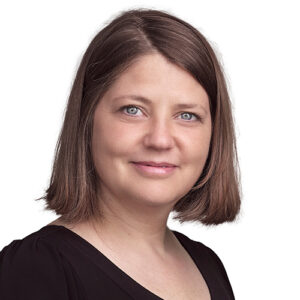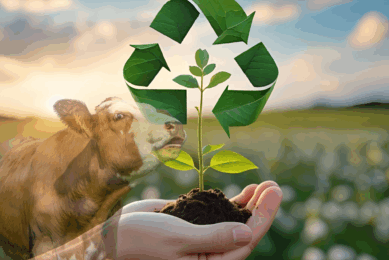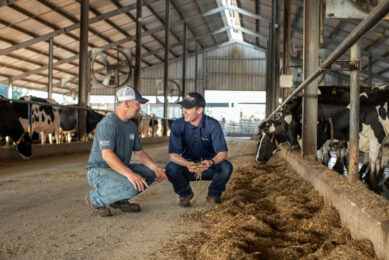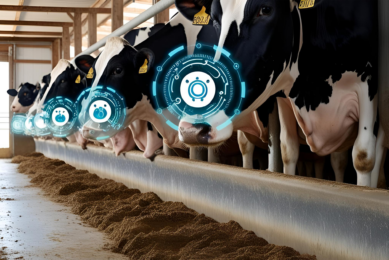Belgium: If farming isn’t profitable, it isn’t sustainable
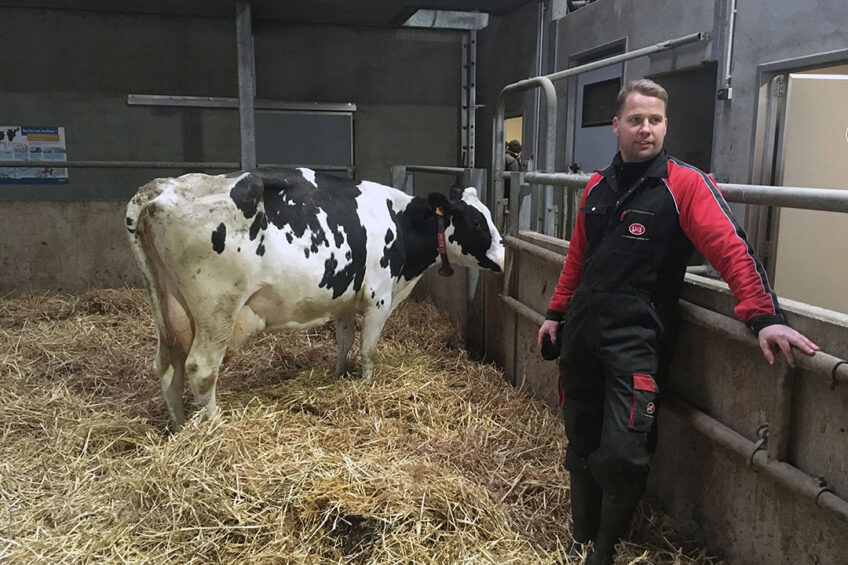
Finding ways to feed the world’s growing population on finite land with limited resources has become a challenge, and ‘sustainable agriculture’ has been toted as the solution. There is, however, no clear definition of sustainable agriculture. While some models address sustainability in terms of how agricultural practices impact people and the planet, they don’t consider profitability. But the bottom line is: if farming isn’t profitable, it isn’t sustainable.
Rethinking sustainability
Located in Merchtem in the region of Flemish Brabant in Belgium, Koeweidehof is home to Bart Vanderstraeten, Marijke d’Hertefelt and their two sons, Vic (5) and Tuur (3). Bart’s parents also live on the property, but in a separate home. Koeweidehof is a 165-hectare mixed farm that has been in Bart’s family since 1931. It has always been a mixed farm, but the make up of that mix has changed. At one time there were pigs on the farm whereas today there are none. When Bart’s parents owned the farm, beef cattle made up the bulk of the business.

Today, the farm is a mix of dairy, beef and crop production, complemented by a biogas facility, solar production and a growing agri-tourism business. Koeweidehof is an excellent model of a sustainable farm that focuses on people, planet and profit.
When Bart and Marijke took ownership in 2012, the farm was heavily focused on beef. The couple decided to shift gears and added dairy to the mix. Having grown up on a large dairy farm, Marijke brought a wealth of experience to the table. Bart brings added expertise of his own. He works at Lely one day of the week off farm where he’s in charge of sales for Vector, Lely’s automatic feeders. Adding dairy has allowed them both to make use of their education. It’s also diversified the farm’s portfolio, further securing future income.

Milk production
Continued health is another important aspect of production on the farm. Using sensors in the milking robot, Bart and Marijke record temperature, protein, fat, milk colour and conductivity. They weigh cows regularly and use an SCR sensor collar to monitor feed intake and movement. Together, the two devices collect enough data to closely monitor the health of the herd. Securing the health and well-being of the herd secures profit. It also ensures the public gives them a so-called ‘social license to operate.’
The couple’s story is an interesting one. Improving efficiencies has helped them boost production, and therefore, farm income. Since quota ended in 2015, the couple has more than doubled production, boosting milk production from 600,000 L/yr to 1.4 million L/yr. Their goal is to increase production to 1.5 million L/yr using two Lely A4 Astronaut robots.

Most of the milk is delivered to Milcobel; however, each year, approximately 10,000 L is sold raw through the farm’s ‘automaat’, a vending machine situated on the side of the road just outside of the farm. One litre sells for €1, and two litres sell for €1.50. A one-litre plastic bottle costs €0.25 and milk costs €0.30 a litre, so profits on a one-liter bottle amount to €0.45. The ‘automaat’ isn’t there just to make money, though, said Bart. It brings consumers to the farm, which helps bridge the gap between producer and consumer.
 Profile ProfileBart and Marijke milk 130 Black Holstein cows (120 in milk, 10 dry). They have 110 young cows on the farm, including heifers and calves. Cows are milked using two Lely Astronaut A4 automatic milking robots. In 2017, they further improved efficiency by adding Lely’s automatic feeding system, Vector. |
Bart and Marijke have also made considerable investments in alternative energy. Their biogas facility produces 22 kWh or 150,000 kW/year. Each year they use 90,000 kW to run the farm; the remainder is sold to the grid. Solar panels provide all the energy needed to power the two homes on the farm. Adding both has diversified income, and lowered the farm’s overall carbon footprint.
Public involvement
In their continuing effort to bridge the rural-urban divide, Bart and Marijke have opened their farm to the public. Each year they welcome 2,000 school children and 500–750 adults to the farm.
It’s important to have contact with the public, said Marijke, as it helps them to better understand where their food comes from. “If that connection is not there, the farmer cannot exist,” she said.
In March 2020, the couple plans to launch a team-building business called “Farm Fun.” Farm Fun is a grassroots, farmer-driven initiative that aims to bring businesspeople from the city to the farm. The business should increase the number of visitors to 3,000. Theirs will be the third Farm Fun in Belgium.
We’re facing a new era in agriculture. The public is watching and scrutinising farm operations. They want to know that the food they’re eating is healthy and safe, and that it is ethically raised. They want to know that farmers take care of the land they farm on and that they use sustainable practices and alternative energy sources wherever possible. In fact, their license to operate depends on it. But in order for them to continue producing food, they also need to make money. Farming is, after all, a business. The agricultural sector’s best farm examples are those, like Koeweidehof, that take all three sustainability pillars – people, planet and profit – into account. Because the bottom line is: If farming isn’t profitable then it isn’t sustainable. And if it isn’t sustainable, then it likely won’t be profitable.
| More about the farm Bart’s parents raise 70–80 Belgian-Blue beef cows, and they’re in charge of endive production. Thirty laying hens produce eggs for the ‘automaat,’ another draw for consumers. Local egg farmers help with supply, as demand is high. Crops produced on the farm include potatoes (30 ha), flax (10 ha), seed onions (7.5 ha), winter wheat (20 ha) and maize (40–45 ha). Forty hectares are devoted to grass production, and 1.5 ha to the production of Belgian endive or ‘witloof’. More than 80% of feed needed for the farm’s livestock is produced on-farm. Vegetables and potatoes are sold in the couple’s makeshift on-farm shop, bringing more consumers to the farm. |
Join 13,000+ subscribers
Subscribe to our newsletter to stay updated about all the need-to-know content in the dairy sector, two times a week.


